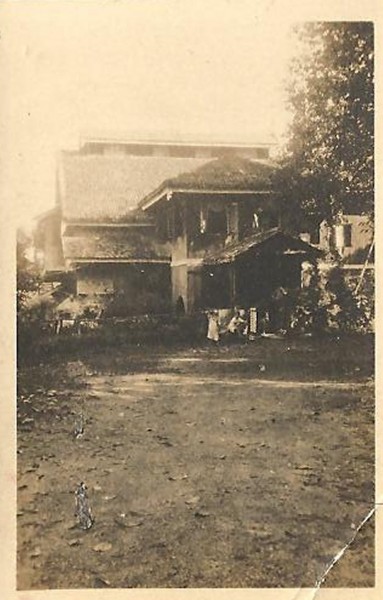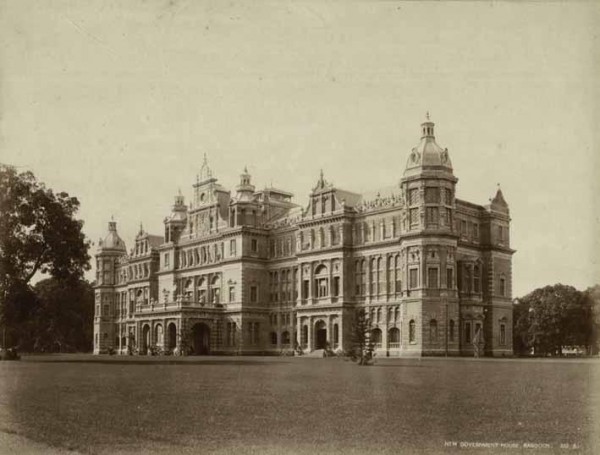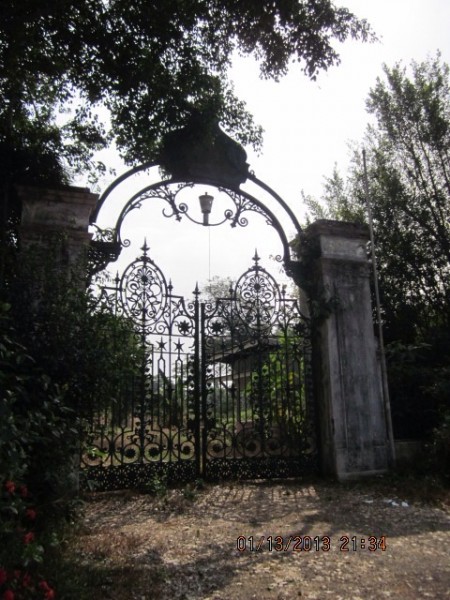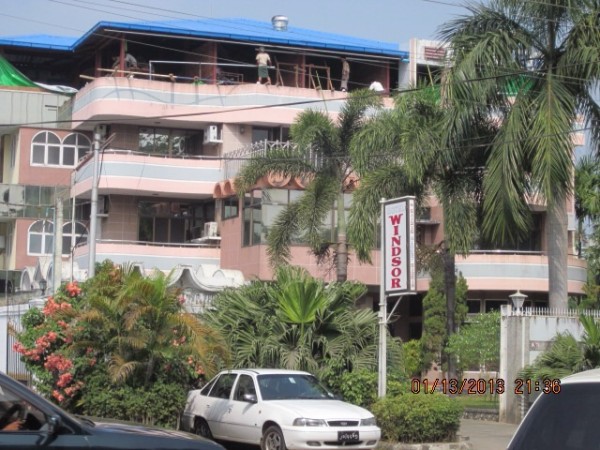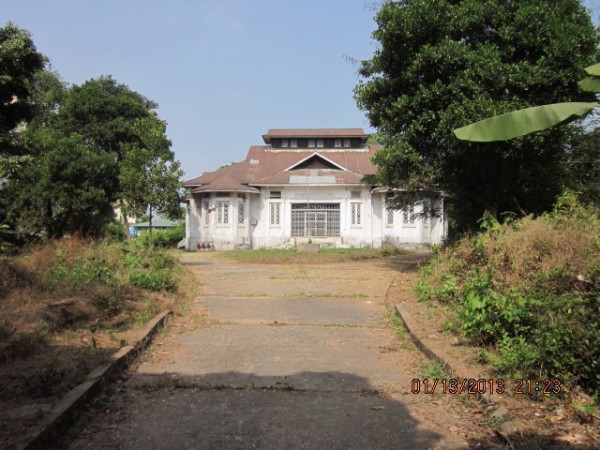In my last post, Attacked by a Peacock I ended with my desire to see where and how Dad had lived in Rangoon. By the time the opportunity to visit Burma came, he had been in a nursing home for a few years with dementia, so I couldn’t explore the family history with him as I wanted. I phoned his brother Arthur, who lived in London, frequently, and he would send me copies of old photos and old maps of Rangoon. In January of 2013, on our second morning in Rangoon, my daughter and I hired a taxi with an interpreter, and armed with Arthur’s map, off we went to Windsor Road (now renamed Shin Sawpu Road.)
I should have had an idea from the map that the property was bigger than I thought but maps and I don’t get on. I always have to turn them in the direction I am travelling, which means reading them upside down, and scales mean nothing to me.
The taxi stopped near the corner of Shan and Windsor roads, where the property started. It was a busy corner, full of billboards advertising instant sweetened coffee, skin lightening creams and Ovaltine, the health drink. We got out and started to walk up the road. Arthur had told me where to look, “You can’t miss it, it’s opposite Government House. Our house was bombed in the war, but there might be others still remaining.” Others? Yes, this had been a compound of several houses, all owned by family members. It stretched along the road for three quarters of a mile, until the boundary in line with a pair of gates, opposite. They belonged to Government House. The penny dropped. This was the neighbour’s house with the peacocks. Dad had forgotten to mention that one important fact – Coffee Grove, all thirteen acres of it, was opposite the toniest address in Rangoon. The huge grounds of Government House were beautifully maintained (including peacocks) and was open to the public at certain times of the year.
Sadly, Government House was torn down by the repressive military government and replaced with an ugly residence. The gardens are neglected and barracks have laundry drying on the verandas. I posed for a picture by the gates and we took a picture of the dilapidated house opposite, on the edge of the Coffee Grove property. Beside it, a pink stucco guest house called “Hotel Windsor” was having another storey added to it, to cope with the influx of visitors.
I sent the photo of the last original house standing in Coffee Grove to Arthur after we got back. “Ah yes, that was the house we always rented out. I think the Jordans lived there.”
A postscript to this story: While doing some research at the British Library, in Thacker’s Indian Directory for 1895, I found the name of my great grandfather, ‘resident at Coffee Grove.’

